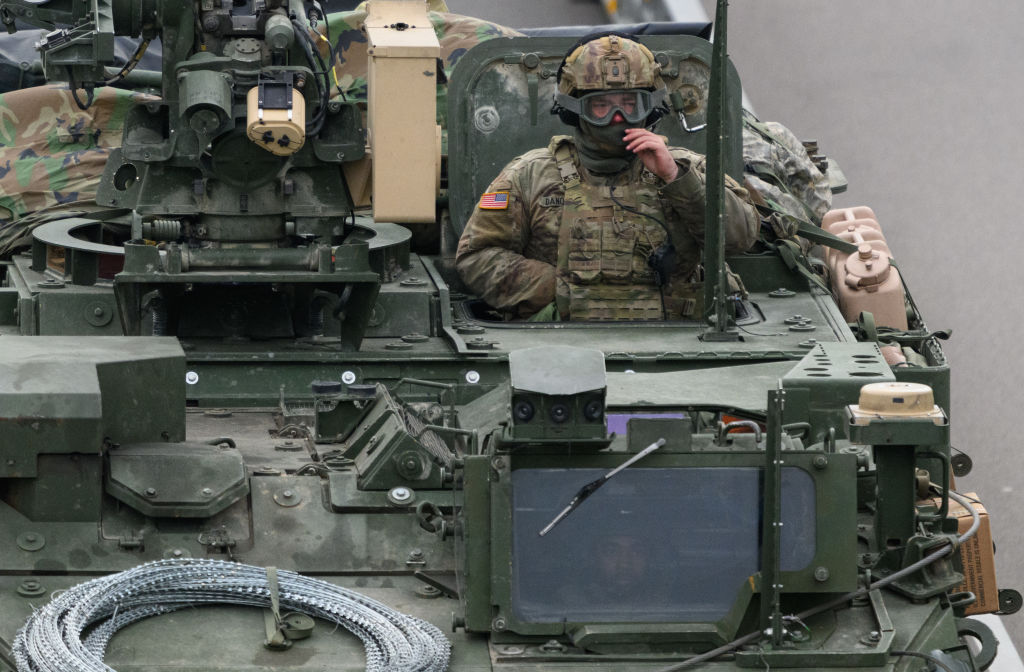New study describes an obesity problem for soldiers that reduces force readiness.
The adage “An army marches on its stomach” may need to be changed to the US military rolls on its stomach — as in roly-poly. Many progressive Department of Defense and congressional leaders wish the military would reflect American society more generally. Well, Americans are chubby, and a new study by the American Security Project reveals too many military members are, too. Wish granted. Unfortunately, the downside is that readiness suffers and by extension national security. Surviving combat on a contested battlefield with a determined enemy is among life’s most difficult physical challenges. It’s nearly impossible to achieve for overweight soldiers.

(Photo by Robert Michael/picture alliance via Getty Images)
All military services experience recruiting speed bumps to one extent or another. The inclination is to relax entrance standards or create pre-enlistment programs to raise the level of a recruit’s performance or physical characteristics. Success stories in pre-enlistment regimens and meeting weight standards may be achieved — but maintaining those standards during active duty has failed. The Centers for Disease Control statistics on obesity in the general population show that more than 41% of Americans are clinically obese. So, it’s not surprising that individuals volunteering for military service are overweight. However, once on active duty or serving in a reserve unit, the expectation might be that the rigors of military life would keep the weight off – but apparently not.
Military Members Overweight According to New Study
In a white paper published by the American Security Project (ASP) entitled “Combating Military Obesity: Stigma’s Persistent Impact on Operational Readiness,” the problem of US Army soldiers being overweight points to a bigger issue. The first key finding was that, based on Body Mass Index data, “68% of active-duty service members have overweight or obesity.” As the nation’s fighting men and women face threats around the world, it is no time for US combat forces to be limited by lack of physical fitness. As the ASP study summary explained, “Obesity poses a complex challenge to recruitment, readiness, and retention within the US Armed Forces … Rapid and sustained recurrence of obesity across all services, ranks, and positions now poses a dire threat, especially for at-risk population and those in critical combat roles.”
The ASP statistics for overweight and obesity trends in a through-service-life population are not encouraging. The data show that in the civilian population, approximately 68% are overweight or obese. Because enlistment standards are higher, 48% of recruits are overweight or obese. During a military member’s time of service, overweight and obesity data reflect that 67% meet the definition. More troubling is that at age 35, 79% of active-duty personnel are considered overweight or obese.
Overweight Service Members Costly to Taxpayers
A CDC study entitled “Unfit to Serve, Obesity and Physical Inactivity Are Impacting National Security” described the dollar cost to the American taxpayer. The CDC estimated the bill at about $1.5 billion, with 658,000 lost workdays for active-duty personnel because of overweight-related illnesses. Paul Szoldra, writing for Task & Purpose, explained, “While it’s not just about the money, that’s the equivalent cost of 52 Apache attack helicopters going down the drain every year.”
 One of the recommendations in the ASP white paper does raise a question. In the section “Expand Treatment and Medication Options,” the analysis explained, “Unfortunately, many do not view obesity as the disease that it is: one that requires treatment like another chronic condition.” Generally, “chronic” conditions are disqualifiers for military service, especially those requiring persistent remedial treatment. Calling obesity chronic defeats the purpose of pre-enlistment programs to raise recruiting numbers.
One of the recommendations in the ASP white paper does raise a question. In the section “Expand Treatment and Medication Options,” the analysis explained, “Unfortunately, many do not view obesity as the disease that it is: one that requires treatment like another chronic condition.” Generally, “chronic” conditions are disqualifiers for military service, especially those requiring persistent remedial treatment. Calling obesity chronic defeats the purpose of pre-enlistment programs to raise recruiting numbers.
Nonetheless, the ASP white paper is informative and a call to action for the Defense Department. However, over the last several years, there have been similar studies with similar conclusions, falling on deaf ears and leaving military leadership bewildered as to what to do. In the meantime, recruiting standards must remain high and physical training must be mandatory for everyone. Readiness will be improved, as well as the health of the force.

